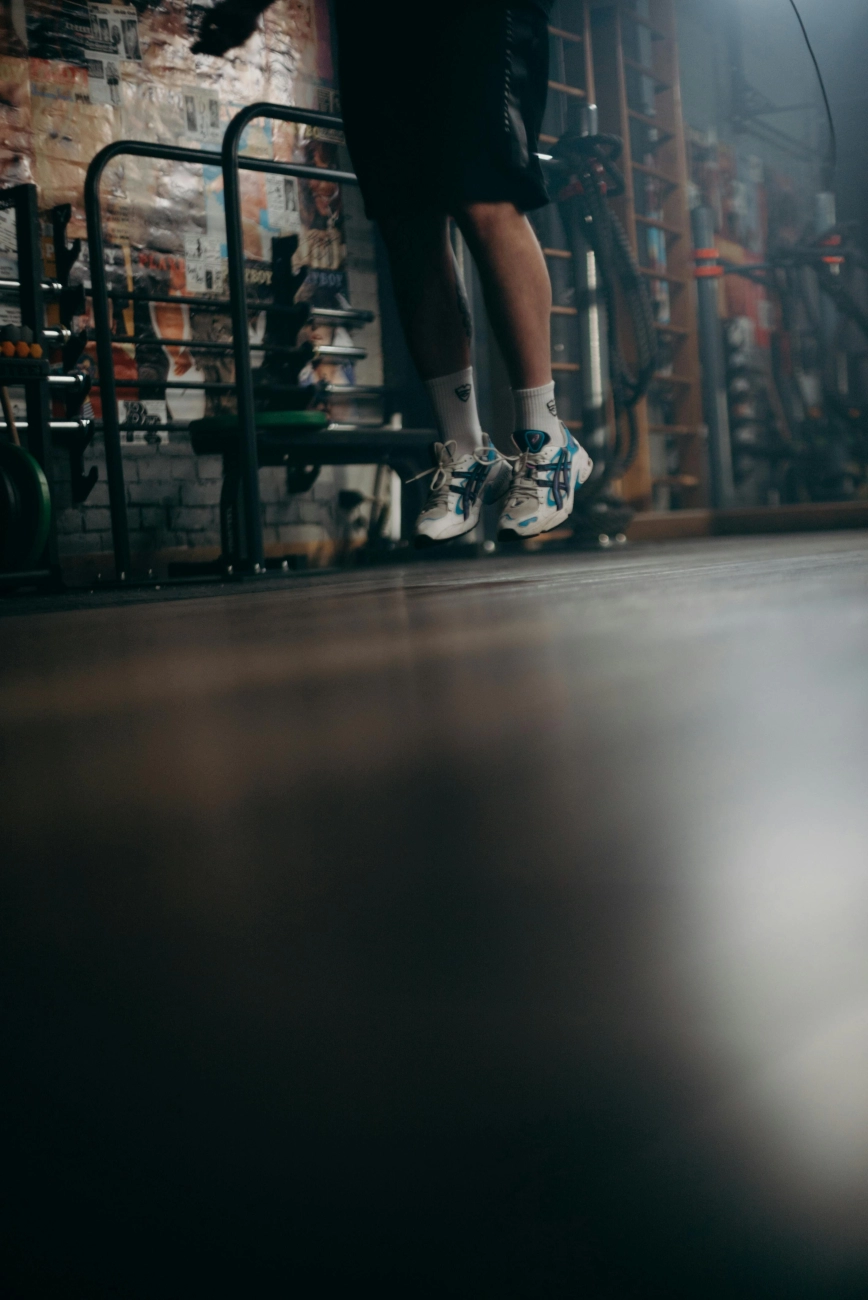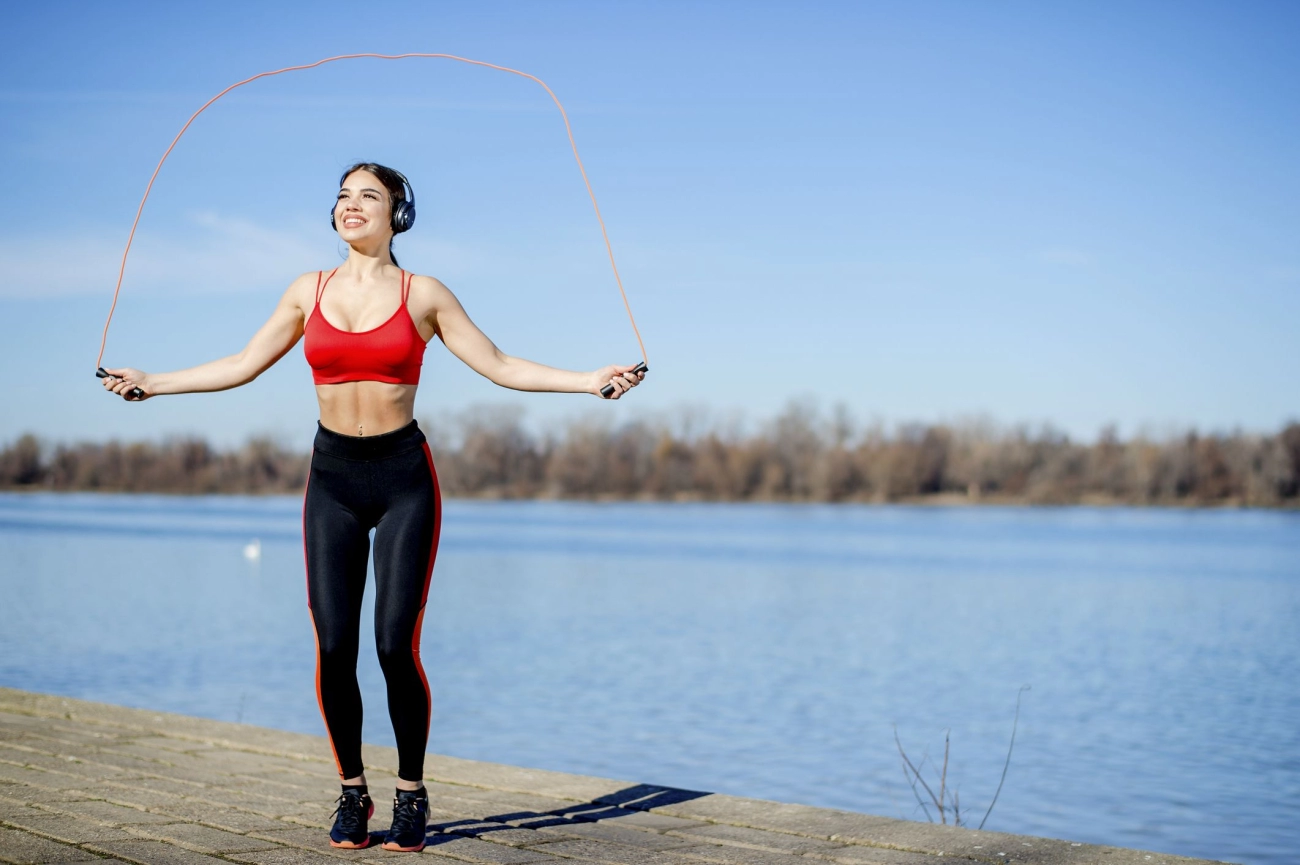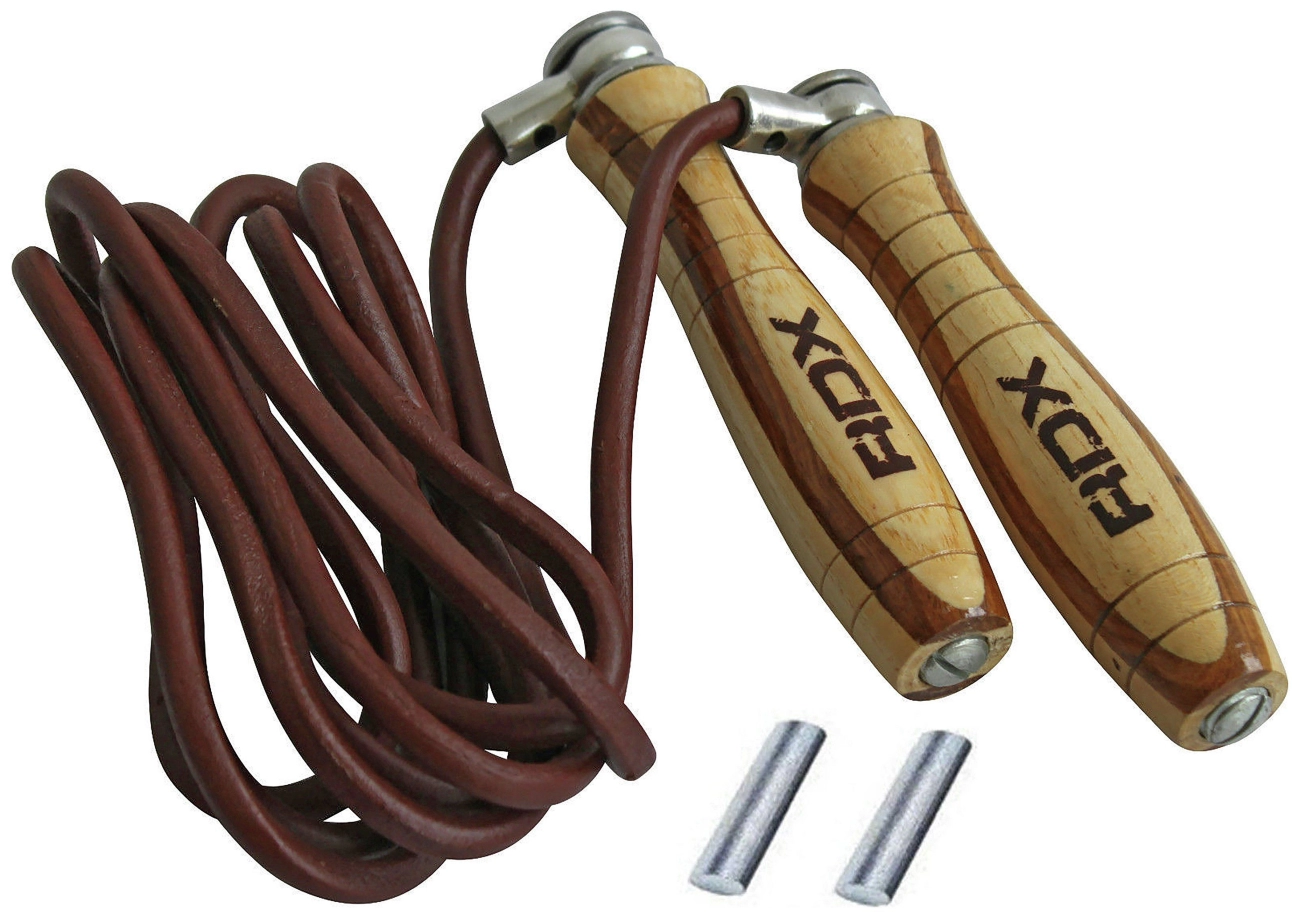Is skipping rope a full-body exercise? If you’ve ever wondered whether this simple yet highly effective workout tool engages more than just your legs, you’re not alone. Skipping rope isn’t just about jumping—it’s a dynamic exercise that challenges your muscles, coordination, and cardiovascular system all at once.
In this guide, you’ll discover how skipping rope targets multiple muscle groups, boosts calorie burn, and improves overall fitness. Whether you’re a beginner or a seasoned athlete, understanding the full-body benefits of skipping rope can transform the way you approach your workouts. Ready to find out if jump roping really counts as a full-body exercise? Let’s break it down.
What Constitutes a Full-Body Exercise
When we talk about a full-body exercise, we mean a workout that engages multiple muscle groups across the body simultaneously. This includes not only muscle activation but also cardiovascular effort, balance, coordination, and sometimes flexibility. A true full-body workout puts your legs, core, arms, shoulders, and even smaller stabilizing muscles to work, while also boosting your heart rate and lung capacity.
Muscle Engagement and Cardiovascular Impact
Full-body exercises don’t isolate just one muscle or movement. Instead, they require many muscles to activate together. This helps build muscle tone and strength, improves endurance, and increases overall functional fitness—movements you’ll use every day.
At the same time, many full-body workouts push your cardiovascular system, improving heart health and boosting metabolism. That means you burn more calories, not just during exercise but after, thanks to elevated metabolic rates.
Why Full-Body Workouts Are Valuable
Full-body exercises offer multiple health and fitness benefits that dedicated single-muscle workouts can’t match:
- Efficient Calorie Burn: Engaging many muscles raises your heart rate, leading to higher calorie consumption and faster fat loss.
- Muscle Tone and Strength: Combining strength with cardio tones muscles all over your body, increasing lean muscle mass.
- Improved Endurance: Working large muscle groups builds stamina, both muscular and cardiovascular.
- Better Balance and Coordination: Many full-body movements challenge your balance and motor skills, reducing injury risk.
- Flexibility and Mobility: Some full-body workouts include dynamic movements that enhance flexibility and joint range of motion.
This combination makes full-body exercises especially effective if you want a workout that’s time-efficient, fat-burning, and improves overall fitness. That’s why workouts like skipping rope, which hit various parts of your body and cardio system, fall perfectly into this category.
The Mechanics of Skipping Rope Full Body Workout

Skipping rope is more than just jumping—it’s a coordinated full body workout that involves multiple muscle groups working together. Here’s how the basic movement breaks down and why it engages so much of the body.
Basic Movement and Muscle Involvement
When you skip rope, your legs do the heavy lifting. The calves, quads, hamstrings, and glutes repeatedly activate to propel you off the ground. Meanwhile, your core muscles (abs, obliques, and lower back) stay engaged to maintain posture, balance, and stability. The arms and shoulders play a critical role too—they control the rope’s motion by rotating it smoothly with the forearms, biceps, triceps, and shoulder muscles all working in sync. This combination makes skipping rope a genuine full body workout with jump rope, involving both upper and lower body strength.
Coordination Timing and Rhythm in Full Body Engagement
Skipping requires precision in timing and rhythm. Coordinating your jumps with the rope swing means your brain, muscles, and cardiovascular system synchronize seamlessly. This rhythm activates more muscles than simple jumping because it demands constant muscle readiness and resetting with each rotation. This connection between mind and body improves balance, agility, and overall muscular endurance, making it an efficient way to engage your entire body.
Intensity Speed and Skipping Style Affect Muscle Engagement
How you skip directly affects which muscles get worked harder. For example:
- Faster speeds increase muscle endurance and cardiovascular load.
- Double unders (two rope passes per jump) intensify arm, shoulder, and core activation.
- Crossovers and high knees add complexity, engaging more upper body and core muscles.
Adjusting your skipping style allows you to target different muscles and keep the workout fresh. This variation is key for maximizing the benefits of skipping rope exercise, like muscle tone and fat burn.
Understanding these mechanics helps you get the most out of your skipping rope workout, turning simple jumps into a powerful full-body exercise.
Which Muscle Groups Does Skipping Rope Target Full Body Workout With Jump Rope
Skipping rope is often touted as a full-body workout, and for good reason. When you jump rope, multiple muscle groups across your body engage simultaneously, making it effective for strength, endurance, and overall conditioning.
Lower Body Muscles Worked
Your legs take the brunt of the work during skipping. This includes:
- Calves — Constantly pushing off the ground keeps your calves firing, improving strength and endurance.
- Quadriceps and Hamstrings — These muscles stabilize your knees and hips as you jump and land.
- Glutes — The glute muscles help with hip extension and maintaining body control.
These lower body muscles not only support jumping but also help with balance and posture throughout your workout.
Upper Body Muscle Engagement
Many people underestimate how much the upper body is involved:
- Forearms — Wrapping and controlling the rope requires grip strength and forearm endurance.
- Biceps and Triceps — Rotating the rope with your arms works these muscles continuously.
- Shoulders — Shoulder muscles stabilize and help maintain rhythm and speed during the workout.
This makes skipping rope more than just a leg workout, turning it into a total-body strength exercise.
Core Muscles for Stability and Balance
Engaging your core is crucial to maintaining smooth, efficient movements:
- Abs and Obliques — These muscles keep your torso upright and help with rotational stability.
- Lower Back Muscles — They support your posture and help prevent injury by stabilizing your spine during jumps.
A strong core lets you control the rope better and maintain higher workout intensity for longer.
Scientific Support for Muscle Engagement
Research and expert opinions back up skipping’s full-body benefits. According to the American Council on Exercise (ACE), jump rope exercises activate up to 80% of the body’s muscles. The coordinated effort between legs, arms, and core means you’re not just burning calories but also building muscle tone and endurance efficiently.
Sports physiologists often recommend skipping rope for athletes precisely because it combines muscle activation across multiple planes of motion while improving cardiovascular fitness.
In : Skipping rope targets calves, quads, hamstrings, glutes, forearms, biceps, triceps, shoulders, abs, obliques, and lower back, confirming it’s a true full-body workout that builds muscle and supports overall fitness.
Cardiovascular and Calorie-Burning Benefits of Skipping Rope
How Skipping Rope Boosts Heart Rate and Endurance
Skipping rope is a highly effective cardio workout that quickly raises your heart rate, improving cardiovascular endurance. When you jump rope, your heart pumps faster to supply muscles with oxygen, which strengthens your heart and lungs over time. This makes skipping rope a great full body workout with jump rope that builds stamina and supports overall heart health.
Calories Burned Per Session Compared to Other Exercises
On average, skipping rope burns between 10 to 16 calories per minute, depending on your speed, intensity, and body weight. This puts it on par with or even ahead of other popular fat-burning exercises like running or cycling. For example:
- Running at a moderate pace burns about 11 calories per minute
- Cycling can burn around 7 to 12 calories per minute depending on speed
Because skipping rope is a high-intensity, jump rope cardio workout that engages multiple muscle groups, it can deliver a calorie burn that rivals running while also improving coordination and muscle tone.
Impact on Metabolism and Fat Loss
Jumping rope not only burns calories during the workout but also boosts your metabolic rate after exercise. This effect, known as excess post-exercise oxygen consumption (EPOC), means your body continues to burn fat at an elevated rate even after you stop skipping. Regular skipping sessions help improve your body’s ability to burn fat efficiently, making it a smart choice for skip rope for fat loss and muscle tone.
skipping rope is a time-efficient, high-calorie burning exercise that enhances both cardiovascular fitness and fat loss, making it a powerful component of any full-body fitness routine.
The Full-Body Workout Benefits of Skipping Rope

Skipping rope is more than just a cardio exercise — it combines cardio, strength, and coordination training in one efficient workout. When you jump rope, you engage multiple muscle groups simultaneously, which boosts your overall fitness without needing separate workouts for different body parts.
Improves Balance Agility Bone Density and Reflexes
One of the standout benefits of skipping rope is how it improves your balance and agility. The constant rhythm and timing challenge your body to stay coordinated, enhancing your reflexes and making everyday movements smoother. Plus, the impact of jumping helps increase bone density, supporting bone health and reducing the risk of osteoporosis.
Time Efficient Total-Body Workout
For busy schedules, skipping rope offers a time-efficient full body workout that packs cardio and strength benefits into short sessions. Just 10-15 minutes a day can improve your endurance, tone muscles, and help with fat loss. This makes it ideal for anyone looking to get a quick, effective workout without the gym or bulky equipment.
In short, skipping rope works your heart, tones your muscles, sharpens your coordination, and strengthens your bones — all at once, making it a powerful full-body fitness tool.
Tips to Maximize Full-Body Engagement When Skipping Rope

To get the most out of your full body workout with jump rope, focusing on proper form, incorporating effective variations, and adjusting duration and intensity based on your goals is key.
Focus on Proper Skipping Form and Posture
- Keep your posture upright and relaxed. Avoid leaning forward or backward. This helps engage your core muscles, including your abs and lower back, improving balance and stability.
- Use your wrists to turn the rope, not your arms. This keeps your shoulders and forearms active but prevents fatigue and injury.
- Maintain a slight bend in your knees while landing softly on the balls of your feet. This protects joints and engages your lower body muscles like calves, quads, and glutes.
- Engage your core throughout the exercise. Tightening your abs will improve form and maximize muscle involvement across your trunk.
Incorporate Skipping Rope Variations
Adding variety can boost muscle engagement, coordination, and calorie burn. Try these to target different muscle groups and improve overall fitness:
- Double unders: Rope passes under your feet twice with each jump. This ramps up intensity and challenges your coordination and cardio.
- Crossovers: Cross your arms while jumping, which activates your shoulders, forearms, and upper chest muscles.
- High knees: Bring your knees up toward your chest as you jump, increasing lower body and core activation while improving endurance.
- Side swings or alternating foot jumps: These variations activate different parts of your legs and help improve agility and balance.
Set Duration and Intensity Based on Fitness Goals
- For fat loss and cardiovascular endurance: Aim for 15-30 minutes of moderate to high-intensity skipping with short breaks. Interval training using bursts of faster skipping (like double unders) followed by slower pace works well.
- For muscle tone and strength: Focus on shorter, high-intensity sessions (around 10-20 minutes) using variations that engage upper body and core, like crossovers and high knees. Include jumps that engage your glutes and quads.
- For beginners: Start slow with 5-10 minutes to build coordination and endurance. Gradually increase duration and incorporate new variations to avoid injury.
By combining good form, smart variations, and tailored workout duration, you unlock the full potential of skipping rope as a efficient full body workout. For the best results, choose a quality rope that suits your style and fitness level—explore our range of PVC and weighted jump ropes to find the right fit.
This approach ensures you engage most muscle groups, boost your heart rate, and get a balanced, effective workout every time you skip.
Common Mistakes That Limit Full Body Benefits of Skipping Rope

Skipping rope is a powerful full body workout, but some common mistakes can reduce its effectiveness and limit muscle engagement, calorie burn, and overall results.
Poor Posture and Excessive Lower Body Use
One of the biggest errors is poor posture, like slouching or leaning too far forward. This puts unnecessary strain on your back and reduces core activation. Many people also rely too much on their legs, turning skipping into just a lower body exercise. To get full body benefits, you need to:
- Keep your back straight and chest up
- Engage your core muscles throughout
- Use your arms and shoulders to help rotate the rope instead of just swinging your wrists
Incorrect Rope Length and Weight
Using a skipping rope that’s too long or too short can throw off your rhythm and force you into awkward jumping patterns. This leads to less efficient workouts and limited full body engagement. The right rope length helps maintain proper form and timing, while the rope’s weight influences muscle activation:
- Heavier ropes promote upper body strength and endurance
- Lighter ropes enable faster speed for cardio focus
Make sure you pick the best skipping rope length by standing on the middle of the rope — the handles should reach just below your armpits.
Importance of a Quality Skipping Rope
The quality of your skipping rope impacts both workout efficiency and injury prevention. Cheap or poorly made ropes can tangle, snap, or cause uneven swings, pulling you off balance or tempting you to stop early.
JumpRopeWholesale offers durable, well-designed jump ropes — including PVC and beaded options — tailored to meet various fitness needs. Investing in a quality rope ensures smooth movement, better coordination, and allows you to focus on full body workout benefits without interruptions.
Avoiding these mistakes and choosing the right equipment helps you maximize the full body workout with jump rope, making every session count for fat loss, muscle tone, endurance, and overall fitness.
Why Choosing the Right Skipping Rope Matters for a Full-Body Workout
Picking the right skipping rope plays a major role in workout efficiency and injury prevention. A poor-quality or wrong-length rope can throw off your rhythm, cause tripping, or force you into awkward movements, limiting the full-body benefits of jump rope exercise.
How Rope Quality Affects Your Workout
- Smooth rotation keeps your momentum consistent, allowing better coordination between legs, core, and arms.
- Durable materials prevent unexpected breaks mid-session, keeping your workout uninterrupted.
- The right weight helps engage muscles more effectively—light ropes focus on speed and cardio, while weighted ropes add resistance for strength.
- Good handles improve grip and reduce wrist strain, critical for maintaining upper body engagement.
Types of Skipping Ropes for Different Fitness Goals
- Speed Ropes are lightweight and perfect for fast-paced cardio workouts, building endurance and agility.
- Weighted Ropes add resistance, increasing muscle tone and strength especially for arms, shoulders, and core.
- Beaded Ropes offer durability and visual feedback for beginners, helping improve timing and coordination.
Each type targets different muscle groups and training goals, so choosing what suits your fitness plan matters.
JumpRopeWholesale Product Range Benefits
At JumpRopeWholesale, we offer a diverse selection designed for all skill levels and workout needs. Whether you want a lightweight PVC plastic skipping rope for fast cardio sessions or a weighted skipping rope to build strength, our products combine quality materials and ergonomic design.
Our ropes ensure you maximize the benefits of your full-body jump rope workout with:
- Reliable performance
- Comfortable grips
- Adjustable lengths for perfect fit
- Options suited for both beginners and advanced users
Choosing the right skipping rope from a trusted manufacturer like JumpRopeWholesale helps you avoid common pitfalls and unlocks the full power of this amazing full-body exercise. For more details and to find your ideal jump rope, check out our catalog.
Real User Experiences and Success Stories with Skipping Rope Full Body Workout
Many people across the U.S. have seen impressive results using skipping rope as a full-body workout. From beginners to seasoned fitness enthusiasts, the feedback highlights the effectiveness of jump roping for building muscle tone, improving endurance, and burning fat. Here’s what real users are saying:
-
Beginners often share how skipping rope helped them quickly improve cardiovascular fitness while gradually engaging full-body muscles. One user noted, “Starting with just 5 minutes a day, I built strength in my calves, core, and shoulders without feeling overwhelmed.” This shows skipping is approachable for all fitness levels.
-
Intermediate users report noticeable improvements in muscle tone and coordination after consistent use. For example, an enthusiast mentioned, “Adding double-unders and crossovers transformed my workout. I felt stronger in my arms and legs and my balance improved.”
-
Advanced jump ropers often combine skipping with high-intensity interval training (HIIT) to push endurance limits and burn serious calories. One trainer shared, “Using variations like high knees and weighted ropes helped me target every muscle group while boosting my metabolism and bone density.”
Practical Workout Examples
- Beginner Routine: 3 rounds of 1-minute skipping, 30 seconds rest. Focus on steady pace to build coordination.
- Intermediate Routine: 5 rounds of 30 seconds double-unders, 30 seconds regular skip, 30 seconds rest. Adds intensity and muscle engagement.
- Advanced Routine: 10 rounds of 45 seconds high knees skipping with 15 seconds rest, plus weighted rope for extra resistance.
These routines illustrate how skipping rope scales with fitness goals, always offering a full-body workout with jump rope that fits individual needs.
Why Real Results Matter
Users consistently highlight the convenience of jump rope for a time-efficient total-body workout with benefits such as fat loss, muscle tone, and improved cardiovascular health. Their stories back up what science says — skipping rope truly targets key muscle groups and delivers excellent cardio benefits in one package.
By choosing quality skipping ropes, like those available from JumpRopeWholesale, these users avoid injuries and maximize workout efficiency, leading to better, measurable progress over time.
Jump rope success is real, backed by everyday users who see and feel the full-body benefits. Whether you’re just starting or want to level up, skipping rope can deliver what you need with smart routines and proper gear.



